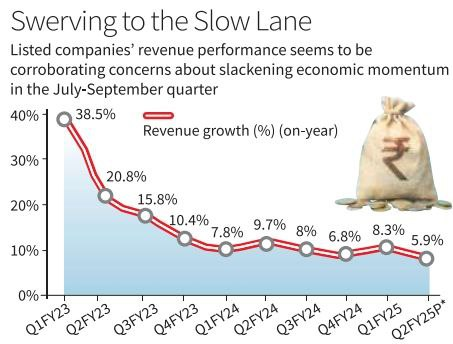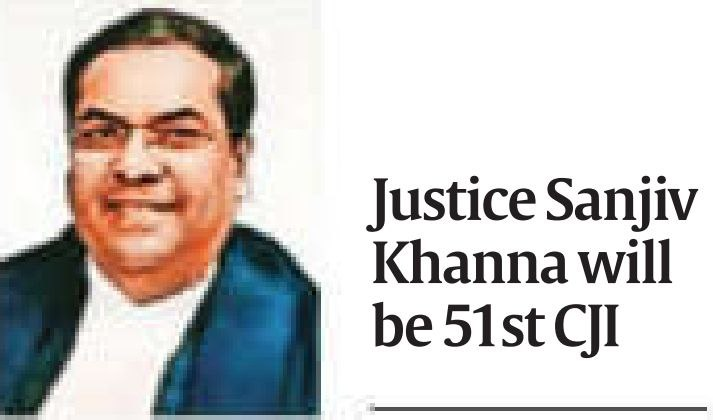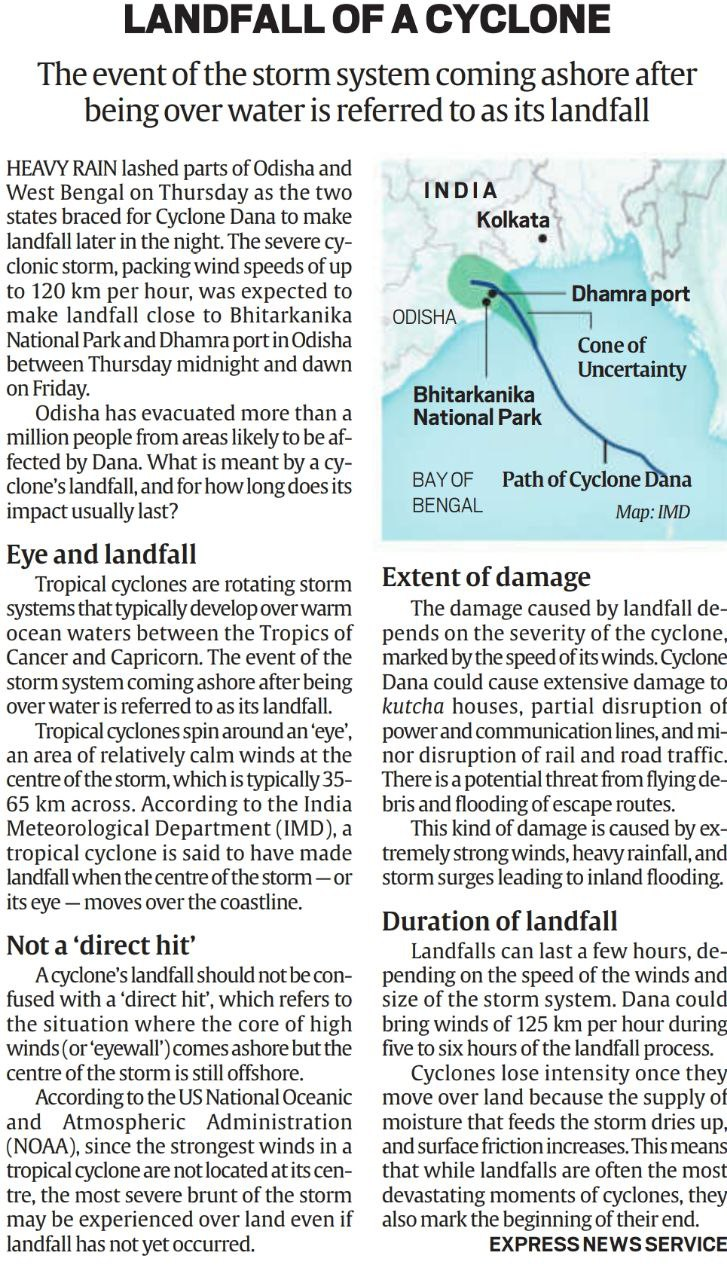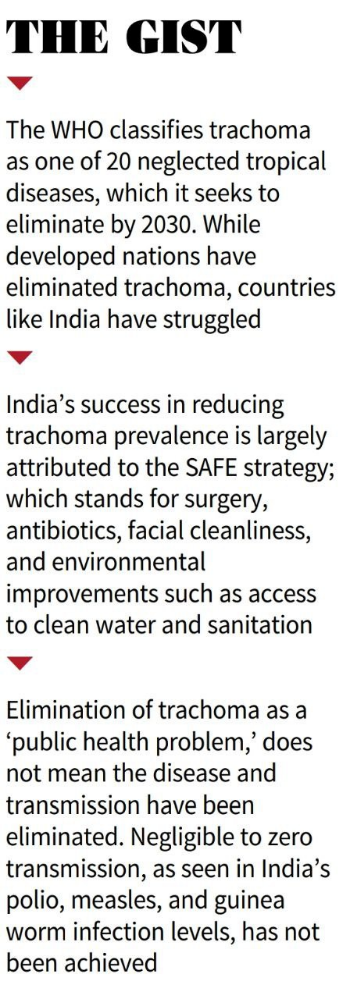Index:
- Q2 Revenue Growth at 16-Quarter Low
- How Panchayat-Level Weather Forecasts Will Help
- Justice Sanjiv Khanna Appointed as the 51st Chief Justice of India (CJI)
- Overflowing Godowns, Unhappy Millers: Paddy Procurement Crisis in Punjab
- Landfall of a Cyclone: Cyclone Dana
- India-China Agreement on Patrolling Along the LAC (2024)
- Other Headline
1. Q2 Revenue Growth at 16-Quarter Low
Context: A Crisil analysis indicates a significant slowdown in revenue growth for Indian companies during the July-September quarter of 2024 (Q2), reaching a 16-quarter low.
- Data is based on an analysis of 435 firms, accounting for half of India’s listed market capitalization.
Key Points:
- Overall Revenue Growth:
- Growth dropped to 5-7%, the weakest in 4 years.
- Significant decline from 3% in the previous quarter (April-June 2024, Q1).
- Sectoral Performance:
- Construction Sector:
- Poor performance due to sluggish government spending post-elections.
- Impact of above-normal monsoon, leading to slower construction activity.
- Commodities Sector: Coal and other industrial commodities faced a 6-7% revenue decline.
- Investment-Linked Sectors:
- Power segment grew just by 1%.
- Construction-linked sectors like steel saw a 2-3% revenue dip due to lower demand and price pressure from cheap Chinese imports.
- Petrochemicals: Reported flat growth in Q2.
- Agriculture: Fertilizer sector witnessed a 20-22% revenue drop.
- Construction Sector:
- Factors Contributing to Slowdown:
- High base effects from Q2 of the previous year.
- Weak global prices across many sectors.
- Sluggish government spending and a slow pickup in projects post-elections.
- Monsoon-related disruptions impacted the construction and related sectors.
- Export-Related and IT Sectors:
- Export-related firms saw a modest 5% revenue uptick.
IT sector managed modest growth of 3-4%, highlighting resilience compared to other sectors.
2. How Panchayat-Level Weather Forecasts Will Help
Context: Panchayat-Level Weather Forecasting is a joint initiative launched by the Panchayati Raj Ministry, India Meteorological Department (IMD), and Ministry of Earth Sciences to provide five-day weather forecasts updated every hour at the gram panchayat level.
- The program was officially launched by Rajiv Ranjan Singh (Panchayati Raj Minister) and Jitendra Singh (MoS, Ministry of Science & Technology and Ministry of Earth Sciences) on October 24.
Key Points:
- Objective:
- Empowering rural communities by enhancing disaster preparedness and promoting sustainable agricultural practices.
- Focus on localized weather forecasts to increase climate resilience in rural areas.
- Helps tackle environmental challenges effectively, especially with climate change leading to unpredictable weather patterns.
- Forecast Delivery:
- Forecasts are available on platforms such as e-GramSwaraj, Gram Manchitra portals, and the Meri Panchayat app.
- e-GramSwaraj is already operational, providing data on temperature, wind speed, cloud cover, rainfall, and humidity.
- Forecasts include five-day updates on minimum and maximum temperatures, rainfall, wind direction and speed, and overall weather conditions.
- Benefits to Rural Communities:
- Localized and detailed weather information can assist farmers in planning activities like sowing, irrigation, harvesting, and even disaster preparedness.
- Helps mitigate risks associated with unpredictable weather, which is increasingly a concern due to climate change.
- Empowers local communities to make informed decisions for agriculture and other critical activities.
- Provides crucial support for rural livelihoods and enhances resilience to natural disasters like floods or droughts.
- Why Local Forecasts Matter:
- Localized forecasts offer more precision in decision-making for rural areas, where broad-scale weather predictions may not suffice.
- Panchayats will receive daily weather updates on key parameters to ensure accurate planning for agricultural and rural activities.
- IMD uses sophisticated models to provide boundary-specific localized data down to the panchayat level, crucial for India’s 55 lakh village panchayats.
- Challenges of Weather Forecasting:
- While advanced technologies exist, the science of weather forecasting has inherent uncertainties, especially in cases like the Indian monsoon and cyclonic systems.
Accurate predictions require precise spatial and time-window forecasting, making localized systems important for managing rural agricultural needs.
3. Justice Sanjiv Khanna Appointed as the 51st Chief Justice of India (CJI)
CONTEXT: Justice Sanjiv Khanna appointed as the 51st Chief Justice of India by President Droupadi Murmu.
- Oath: Expected to take oath on November 11, 2024.
- Predecessor: Will succeed CJI D. Y. Chandrachud, who retires on November 10, 2024.
- Tenure: His tenure will be six months, as he is set to retire on March 13, 2025.
Background:
- Education: Graduated from Delhi University’s Campus Law Centre.
- Career:
- Enrolled as an advocate in 1983.
- Primarily practiced in the Delhi High Court.
- June 2005: Elevated as a judge of the Delhi High Court.
- Served as Senior Standing Counsel for the Income Tax Department.
- Also held the position of standing counsel in civil matters.
Constitutional Provision:
The appointment is made under Article 124(2) of the Constitution of India.
4. Overflowing Godowns, Unhappy Millers: Paddy Procurement Crisis in Punjab
Context: Punjab’s paddy procurement process has faced delays and mismanagement due to overflowing storage facilities and miller resistance, despite favorable weather conditions for harvesting.
Key Points:
- Procurement Status as of October 23, 2024:
- 81 lakh tonnes of paddy procured so far in Punjab.
- Around 90% of procured paddy lies unsold in mandis due to insufficient storage capacity.
- Rice millers resist government procurement of paddy as godowns are full, leading to storage crises.
- Delayed processing impacts the paddy milling schedule
- Challenges in Storage:
- Government godowns have reached near capacity, storing both current stock and carryover stock from the previous season under schemes like the National Food Security Act (NFSA).
- Private rice millers hesitate to take on government paddy due to space shortages, forcing farmers to wait longer for payment.
- Hybrid Paddy Issues:
- Hybrid varieties of paddy have gained popularity but have lower yield and different processing requirements than traditional varieties.
- Millers argue that these hybrids do not meet FCI standards, resulting in mill-milling alignment problems and further slowing down the process.
- Labour and OTR (Out-Turn Ratio) Problems:
- Mandi laborers seek higher wages similar to their counterparts in Haryana, causing additional delays.
- Millers are struggling with OTR percentages, facing a lower grain recovery rate (paddy-to-rice yield) from hybrid paddy, which further complicates their ability to meet FCI requirements.
- Current OTR is 67% for parboiled rice but millers suggest it be reduced to 62% for hybrids.
- Impact on Farmers:
- Only 22% of the paddy crop has been harvested as of now, causing concern among farmers.
- Farmers deliberately slow down harvesting to avoid the risks of delayed payment due to the crisis.
- Delays affect farmer incomes and could potentially lead to protest actions if issues are not resolved swiftly.
- Environmental and Agricultural Consequences:
- Delay in procurement could lead to a shorter window for wheat sowing, which can force farmers to burn stubble, contributing to air pollution in northern India.
- Prolonged crisis risks sparking unrest among farmers.
- Possible Solutions:
- The government could increase temporary storage solutions, and speed up the pace of paddy procurement.
- Adjust OTR norms for hybrid varieties to ensure a smoother process.
- Better coordination between government agencies and millers will be crucial to solving storage and procurement issues.
- Address labour wage disputes promptly to avoid further protests and delays.
5. Landfall of a Cyclone: Cyclone Dana
CONTEXT: Cyclone Dana is expected to make landfall between Bhitarakanika National Park and Dhamra port in Odisha, bringing wind speeds up to 120 km/h.
Heavy rains hit Odisha and West Bengal, with over 1 million people evacuated from the affected areas.
What is Landfall?
- Landfall: The event when the centre or eye of a tropical cyclone moves over the coastline from the ocean to land.
- Cyclones are rotating storm systems developing over warm ocean waters between the Tropics of Cancer and Capricorn.
- Cyclones have a central eye (an area of calm winds) surrounded by a storm wall where winds are strongest.
Characteristics of Landfall:
- Not a Direct Hit: Landfall does not necessarily mean the eyewall (where the most severe winds occur) comes ashore. The storm can cause severe damage even before the eye reaches land.
- According to the US NOAA, strongest winds are not always located at the center, meaning destructive impacts can be felt before landfall.
Extent of Damage:
- Cyclone Dana may cause damage such as:
- Destruction of kutcha houses.
- Disruption of power and communication.
- Minor disruptions in rail and road traffic.
- Potential flooding and threats from flying debris.
- Damage results from heavy rainfall, strong winds, and storm surges.
Duration of Landfall:
- Landfall usually lasts a few hours, depending on:
- Wind speed and size of the storm.
- Cyclone Dana is expected to bring winds of 125 km/h for about 5-6 hours.
Cyclone Weakening: Once on land, cyclones lose intensity as the moisture supply is cut off and friction from land surfaces increases.
6. India-China Agreement on Patrolling Along the LAC (2024)
Background:
- LAC (Line of Actual Control): The boundary between India and China, not clearly demarcated, leading to frequent disputes.
- 2020 Border Standoff: Escalated tensions in areas like Eastern Ladakh, Galwan Valley, Pangong Tso, and Gogra-Hot Springs. Both sides had significant troop deployments.
- Diplomatic Efforts: Continuous negotiations since 2020 through diplomatic and military channels to resolve border issues.
Recent Developments (2024):
- April 2024 Statement by PM Modi: Emphasized the importance of India-China relations and the need to resolve the prolonged border situation.
- Chinese Response: Chinese Foreign Ministry responded positively, signaling progress in resolving the boundary issues.
- May 2024: Indian External Affairs Minister S. Jaishankar highlighted that the core unresolved issues revolved around “patrolling rights” along the LAC.
Key Elements of the Agreement:
- Patrolling Pact (2024):
- Announced by Foreign Secretary Vikram Misri.
- Patrolling Rights Restored: Both sides can resume patrolling and grazing in certain areas, such as Demchok and Depsang Plains, to the status quo as of pre-May 2020.
- Patrolling System: Indian troops patrol up to the Indian perception of the LAC, leaving behind markers of their presence.
- Article 4 of the 2005 Border Pact:
- Codifies conduct during face-offs:
- Exercise self-restraint.
- Avoid escalation.
- No use of force.
- No provocative actions.
- No marking or placing signs at the spot.
- Codifies conduct during face-offs:
- Three-Step Process for De-escalation:
- Disengagement: Immediate step to pull back troops from friction points.
- De-escalation: Reduction of military presence.
- De-induction: Complete withdrawal of troops from the disputed areas.
- Close Monitoring: Emphasis on preventing clashes like those that occurred in Galwan (2020).
Contours of the Agreement:
- Areas Covered:
- Eastern Ladakh: Demchok, Depsang Plains, and legacy issues predating the 2020 incursions.
- Previous Disengagements: In Galwan, Pangong Tso, and Gogra-Hot Springs, disengagement had already taken place but no renegotiations were made on reopening them.
Diplomatic Meetings:
- BRICS Summit 2024 (Kazan, Russia): PM Modi and President Xi Jinping endorsed the agreement.
- Divergent Statements:
- India emphasized complete disengagement.
- China focused on overall progress but avoided specific mention of disengagement.
Cautionary Approach:
- Trust-Building: India is cautious about trusting China’s actions, emphasizing the need to “trust but verify.”
- Next Steps:
- India’s Special Representatives on the boundary question will meet to explore a mutually acceptable solution.
- China focused on broader talks, with foreign ministers and officials to improve bilateral relations.
Strategic circles in India remain cautious, expecting the entire process to take a couple of years.





